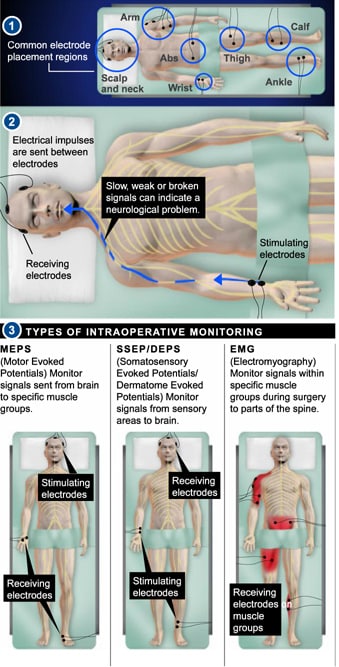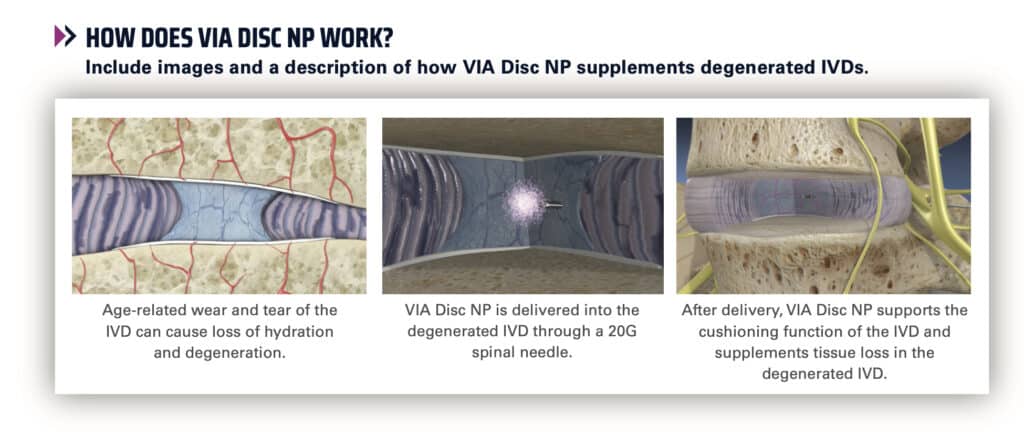Intraoperative Monitoring (IOM) of the Nerves
Spinal surgeries, such as spinal reconstruction, are inherently risky operations. To reduce the chance of nerve damage during surgery, the board-certified surgeons at the Southeastern Spine Institute rely on intraoperative monitoring (IOM) of the nerves, commonly called neuro monitoring.
IOM allows a neurosurgeon or neurotechnologist to monitor your nervous system in real time. The monitoring system works through a series of electrodes placed on specific points of your body. These electrodes send and receive electric pulses along your nervous system. During surgery, IOM allows your physician to immediately identify any potential problem, such as a compressed nerve.
There are three different types of IOM. They each serve a different purpose during spine surgery. You may not need all three.
OVERVIEW
The surgeons at the Southeastern Spine Institute in Mt. Pleasant, SC, use this technique during especially complex surgical procedures, such as those that manipulate the spinal cord. A safety-related process, IOM allows the surgeon to protect the health of your nervous system by monitoring the speed and intensity of the electrical impulses it generates. This process reduces the risk of surgery-related nerve damage. The IOM system is described below.
 1. EXPLAINING THE DIFFERENT TYPES OF IOM
1. EXPLAINING THE DIFFERENT TYPES OF IOM
As shown in illustration 3, your neurotechnologist or neurosurgeon uses one IOM technique to monitor the electric signals that travel from your brain to certain muscle groups. He uses another to measure the impulses from specific parts of your body (sensory areas) back to your brain. A third type of IOM tests signals within certain muscle groups. The third technique is necessary only during spine surgeries where nearby nerves serve those muscles.
2. PLACING THE ELECTRODE ARRAY
A neurosurgeon or neurotechnologist attaches a series of electrodes to your body. These electrodes are placed on the surface of your skin as well as beneath the skin (sub-dermally). The number and position of the electrodes depend on the type of surgery and your physical condition. For an example, see illustration 1.
3. MONITORING NERVE PATHWAYS
During surgery, your nerve pathways are monitored continuously, in real time. As shown in illustration 2, the IOM sends electric pulses through your nervous system between different electrodes. If any changes in the speed or intensity of the signals occur, the surgeon can quickly find the problem — such as a compromised nerve — and make a correction immediately and prevent permanent damage.
SURGICAL PROCEDURES

 1. EXPLAINING THE DIFFERENT TYPES OF IOM
1. EXPLAINING THE DIFFERENT TYPES OF IOM